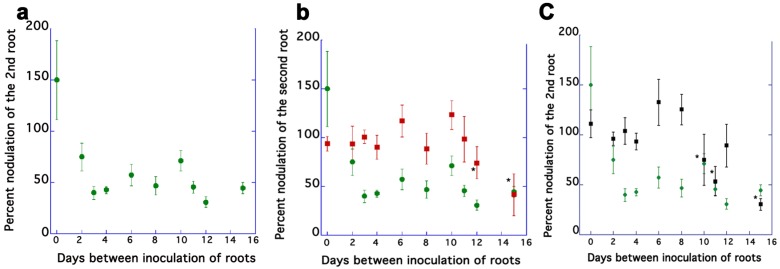Figure 1.
Persistence of the systemic suppression signal in mutant and wild type plants. (a) Wild type plants have consistently fewer nodules on the second root when the second root is inoculated 2–15 days after the first. Percent nodulation was calculated by dividing the mean nodule number of the second root by the mean nodule number of the first root. Values for time points 2–15 are statistically significant from time 0. (b) Wild type values (green dots) compared to the sunn-4 allele values (red boxes). Data points marked with * are not statistically different between wild type and mutant (c) Wild type values (green dots) compared to the rdn1-2 allele values (black boxes). Data points marked with * are not statistically different between wild type and mutant. Percent nodulation was calculated by dividing the mean nodule number of the second root by the mean nodule number of the first root. Statistical comparisons among means are based on factorial ANOVA followed by pairwise mean comparisons. Data are shown as means ± SE. (n = 6 to 47 plants for each time point per genotype).

